How do indoor air pollutants affect your health?
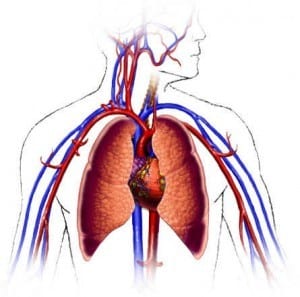 Are you experiencing health issues and are not sure if they can be attributed to allergies, the common cold, or something more serious? The health effects of indoor air pollutants are very common and very important issues that the experts at EMS frequently address. Did you know that the U.S. Environmental Protection Agency has declared indoor air quality a greater health hazard than outdoor air? Pollutants can be up to 100 times higher in indoor air than outdoor air! The presence of harmful substances often goes unnoticed until an occupant’s health is compromised.
Are you experiencing health issues and are not sure if they can be attributed to allergies, the common cold, or something more serious? The health effects of indoor air pollutants are very common and very important issues that the experts at EMS frequently address. Did you know that the U.S. Environmental Protection Agency has declared indoor air quality a greater health hazard than outdoor air? Pollutants can be up to 100 times higher in indoor air than outdoor air! The presence of harmful substances often goes unnoticed until an occupant’s health is compromised.
Various substances present different health risks, some more serious than others. Nonetheless, when it comes to mysterious ailments, improving indoor air quality can often relieve the symptoms that accompany the presence of indoor air pollutants. The six most dangerous indoor air pollutants are:
- Asbestos
- Carbon Monoxide
- Lead
- Mold
- Radon
- Volatile Organic Compounds (VOCs)
In this article, we will discuss the dangers of each indoor air quality concern, the health issues associated with each pollutant, and the ways in which a trained professional can assess and remediate the quality of the air in your building.
Asbestos
Asbestos is a naturally-occurring group of minerals that are found in the environment that used to be common components of building material. They are found as bundles of durable fibers that are fire-, heat-, and chemical-resistant and do not conduct electricity.
Exposure to asbestos can occur at home, at work, and elsewhere in the community. It is not hazardous when the fibers are intact, but upon disturbance the fibers may be released into the air. If inhaled, the fibers become trapped in the lungs, where accumulation may lead to scarring and inflammation.
All forms of asbestos pose a risk to human health, but different types of asbestos fibers may be associated with varying health issues. Some fibers may lead to lung cancer and mesothelioma, which is the most common form of cancer associated with asbestos exposure. Other cancers that may arise as a result of exposure to asbestos include gastrointestinal and colorectal cancers, and cancers of the throat, kidney, esophagus, and gallbladder.
Signs and symptoms of asbestos-related diseases may lie dormant for years after exposure. If any of the following symptoms develop, a physical examination and chest x-ray may be necessary: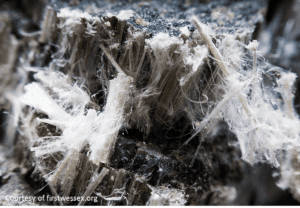
- Shortness of breath, wheezing, hoarse voice
- Persistent cough that continually worsens
- Blood in lungs
- Pain or tightness in chest
- Swollen neck or face
- Difficulty swallowing
- Loss of appetite
- Weight loss
- Fatigue or anemia
If your building has products containing asbestos but are in good condition, try to maintain them without any disturbances. Otherwise, having the products removed by a professional will be the best way to avoid further exposure. An asbestos inspector can assess your building and sample suspected materials, and can recommend any necessary corrective action. An asbestos contractor can perform the actual removal of any asbestos-containing materials.
Carbon Monoxide
Appliances, engines, and enclosed spaces that are not properly ventilated may encourage the accumulation of carbon monoxide. It is a colorless, odorless, and tasteless gas that is produced by the incomplete combustion of fossil fuels and the burning of wood, propane, gas, charcoal, and other fuels.
As carbon monoxide builds up in the air, the body replaces oxygen in red blood cells with carbon monoxide. This prevents oxygen from reaching bodily tissues and organs.
Carbon monoxide poisoning can be fatal if concentrations are high enough. Unborn babies, children, and older adults may be more susceptible to carbon monoxide poisoning. Fetal blood cells absorb carbon monoxide more readily than adult blood cells do. Children inhale more frequently than adults, increasing the chance for carbon monoxide uptake. Older adults who experience carbon monoxide poisoning may be more likely to suffer brain damage.
Certain signs and symptoms may indicate carbon monoxide poisoning include: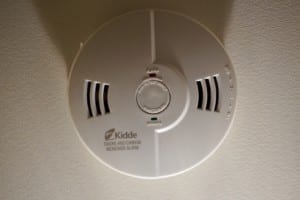
- Dull headache
- Weakness
- Dizziness
- Nausea or vomiting
- Shortness of breath
- Confusion
- Blurred vision
- Loss of consciousness
- Elevated heart rate
To prevent any releases of carbon monoxide, have heating and ventilation systems checked yearly by a professional. Combustion appliances should not be used inside if the appliance does not have a vent. It is better to monitor for carbon monoxide than it is to test for it. Install carbon monoxide sensors one each level of your building!
Lead
Lead is a naturally-occurring element found in the air, soil, water, and the earth’s crust that is very toxic if it enters the body at high levels. It is most commonly inhaled as a dust, fume, or mist, and can be found in pipes and plumbing materials, ceramics, gasoline, cosmetics, ammunition, and batteries. Lead particles can become airborne, increasing the chance of inhalation.
Once inhaled, it is distributed throughout the body by the bloodstream and stored in the bones. It can negatively affect every organ and every system in the body. The nervous system, kidney function, immune system, developmental and reproductive systems, cardiovascular system, and the brain may all sustain damage from exposure to lead.
Children under the age of six are the most vulnerable population, even to low levels of lead in the body. Some of the signs and symptoms of lead poisoning include: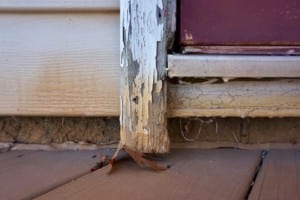
- Behavioral and learning problems
- Lower IQ and hyperactivity
- Slowed growth
- Hearing problems
- Anemia
It wasn’t until 1978 that the EPA banned lead-based paint. If your structure was built before 1978, chances are the paint on the walls has lead in it. If the paint begins to chip, it creates dust that contains lead. Be sure the floors are frequently mopped to avoid stirring up dust that may contain lead.
Another source of exposure is contaminated soil. Should a person walk through contaminated soil and track it into a building, lead particles may become airborne, increasing chances of inhalation. If children play outside in contaminated dirt, they may not only track it into the building, but ingest lead-containing soil if there are any remnants on their hands.
An expert such as a licensed lead abatement contractor will be able to test the quality of your air and detect levels of lead that pose danger to the health of the building’s occupants. In some cases, chipped paint can be re-painted to avoid further chipping and encapsulate the pollutant. In other instances, a full assessment and cleanup may be necessary to remove the lead-containing object(s). Only licensed professionals will be able to properly encapsulate or remove the pollutant.
Mold
Mold spores are found everywhere in nature. A source of moisture–such as humidity (water vapor)–is required for the exacerbation of mold within indoor environments. To prevent visible mold growth that may cause health issues, relative humidity levels should not exceed 40 percent.
Certain species of mold, such as the toxic black mold Stachybotrys, are known to cause negative health effects, sometimes severe. Mold can cause Type I and Type II fungal hypersensitivity reactions, dermatitis, upper and lower respiratory symptoms, asthma, pneumonia, rhinitis, hay fever, edema, onychomycosis, sinusitis, and even pulmonary emphysema in chronic cases. One or more of the following symptoms may be associated with the presence of mold in your building: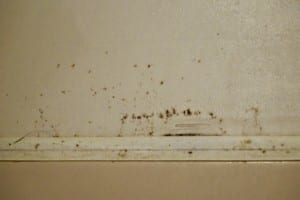
- Nasal stuffiness
- Throat irritation
- Coughing or wheezing
- Eye irritation
- Skin irritation
All persons may be susceptible to health effects from poor indoor air quality; however, certain groups of the population may be more sensitive and/or vulnerable. Immunocompromised individuals and people with chronic lung illnesses may get serious infections in their lungs when exposed to mold. Young children who are exposed to mold have a greater chance of developing asthma, shortness of breath, and respiratory allergies. Very old populations are also more vulnerable to the effects of mold because of the normal aging process. The body’s immune system simply does not work as well as it did in previous years.
In air, mold can be tested for by attaching air sampling cassettes to portable battery-operated air sampling pumps. Once a sampling cassette is attached to the pump, a known volume of air is drawn through the sampling cassette. Known volumes of air can be calculated by calibrating each sampling pump with the use of a flowmeter, and programming a sample time duration to the air pump. Common flow rates are expressed in liters per minutes (LPM).
The IAQ assessor must collect enough samples from within the indoor environment to properly assess the area of concern, as well as background samples that are collected from the outdoor environment. Background samples must be collected on the same day as the indoor samples to represent background conditions during the survey. EMS typically recommends a minimum of five air samples be collected from the indoor environment, regardless of the size of the structure.
Radon
Radon is a radioactive gas. It is unable to be seen, smelled, or tasted, but levels in your building may be way above the EPA’s recommended action levels of four picocuries per liter (pCi/L). Radon is most commonly found in geologic regions that have prevalent granite or shale deposits. Within the United States, the occurrence of radon has been documented to be particularly common in certain areas of Iowa, Maine, and Pennsylvania.
Radon can cause indoor air quality concerns, as it is a known carcinogen—in fact, the U.S. Environmental Protection Agency states that radon kills 21,000 people each year as the second-leading cause of lung cancer in the United States, behind smoking. Signs of radon gas exposure include symptoms similar to those associated with lung cancer:
- Persistent cough
- Difficulty breathing
- Chest pains
- Bloody cough
- Wheezing
- Hoarseness
- Recurring respiratory infections (pneumonia, bronchitis, etc.)
The source of radon is naturally occurring and is produced as a daughter product of radioactive decay associated with radium and uranium deposits. It can migrate into structures via basements, crawl spaces, cracks in foundation slabs, and/or preferential pathways created by utility perforations in slab on grade structures.
Radon test kits are available from many sources, including sources coming directly from laboratories that include radon testing in their repertoire of analytics. Digital radon detectors are also commercially available and can provide data-logging features that allow for the observation of possible trends during periods of higher ventilation rates of the indoor structures, or even during periods of changing weather conditions as barometric pressure is rising or falling.
Volatile Organic Compounds
Volatile Organic Compounds (VOCs) encompass a large range of chemicals and are found in many products that are used on a daily basis. VOCs include petroleum-based products, solvents, cleaners, and degreasers.
Some of the largest sources of VOCs today include fuels (such as gasoline, diesel, heating oil, and kerosene), chlorinated solvents (such as those use in dry cleaning and industrial applications), and common household cleaning chemicals (such as gun cleaning kits, yard equipment, fuel storage can, oven cleaner that is kept under the kitchen sink, and the perfume or cologne that you sprayed on before you left for work this morning).
Sources of indoor air quality degradation related to fuels can be your structure’s HVAC system (especially if it is located near an exhaust source), underground storage tanks utilized as heating or boiler utilities, leaky fuel delivery lines, improperly-functioning furnaces, and even fire-starter logs that are sometimes burned in fireplaces.
In recent years, vapor intrusion has become more and more prevalent in the realm of indoor air quality. Vapor intrusion is a very literal term, which implies vapor intrusion from subsurface sources such as soil, groundwater, and underground utilities.
VOC vapors can be hazardous and dangerous, as they accumulate in concentrations that are explosive and include many carcinogens and mutagens. A main driving force that promulgated vapor intrusion studies was heart defects in babies resulting from their mother’s exposure to Tetrachloroethene (PCE), Trichloroethene (TCE), Vinyl Chloride (VC), and Benzene during pregnancy. A host of different cancers and neurological diseases and effects can be attributed to exposure to VOC vapors. A few of the symptoms associated with exposure to VOCs include:
- Headache
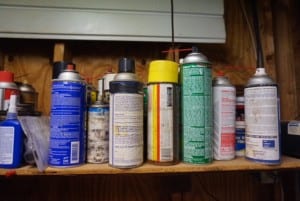
- Dizziness
- Eye, nose, and throat discomfort
- Loss of coordination
- Nausea
- Liver, kidney, and central nervous system damage
- Allergic skin reaction
- Fatigue
- Nose & throat discomfort, coughing
When sampling for VOCs in indoor air, an IAQ assessor will utilize stainless steel containers, known as SUMMA canisters. They are deployed within the area of concern, as well as within “background” areas outside of the areas of concern. An environmental laboratory that specializes in air analyses will be able to provide you with the appropriately cleaned and calibrated SUMMA canisters to accomplish your air sampling regimen.
How can EMS address the health effects of indoor air pollutants?
Confirming the presence of an indoor air pollutant is often fairly straightforward. However, determining the source of the pollutant(s) can be complicated and illusive. If you need help addressing your indoor air quality concerns, please contact us.



Great info! Definitely will take this into consideration when looking for the right air filter. Thank you!
Mark, we’re so happy you found this article helpful! Please feel free to reach out to us if you have any questions about air filters or indoor air quality concerns.